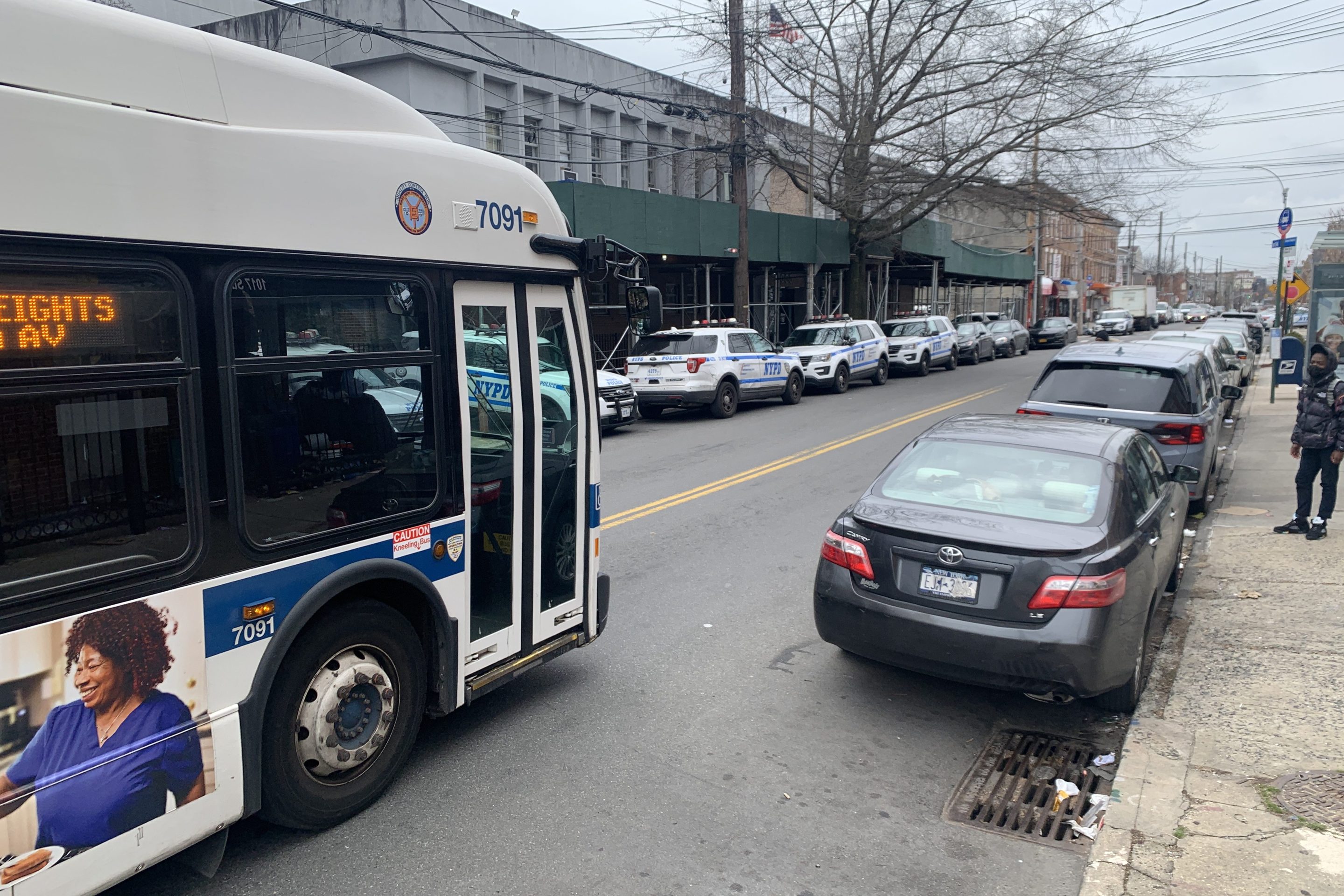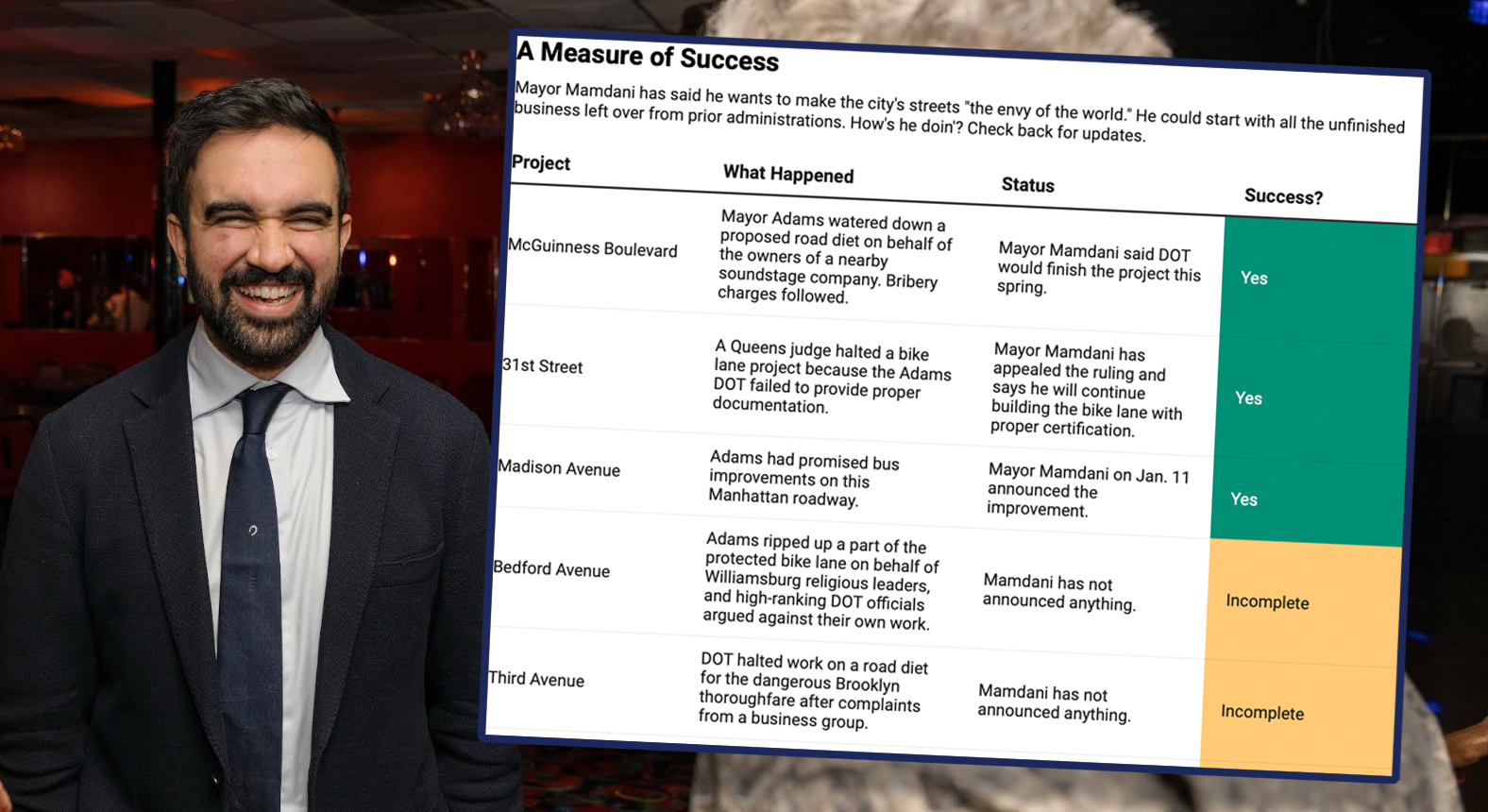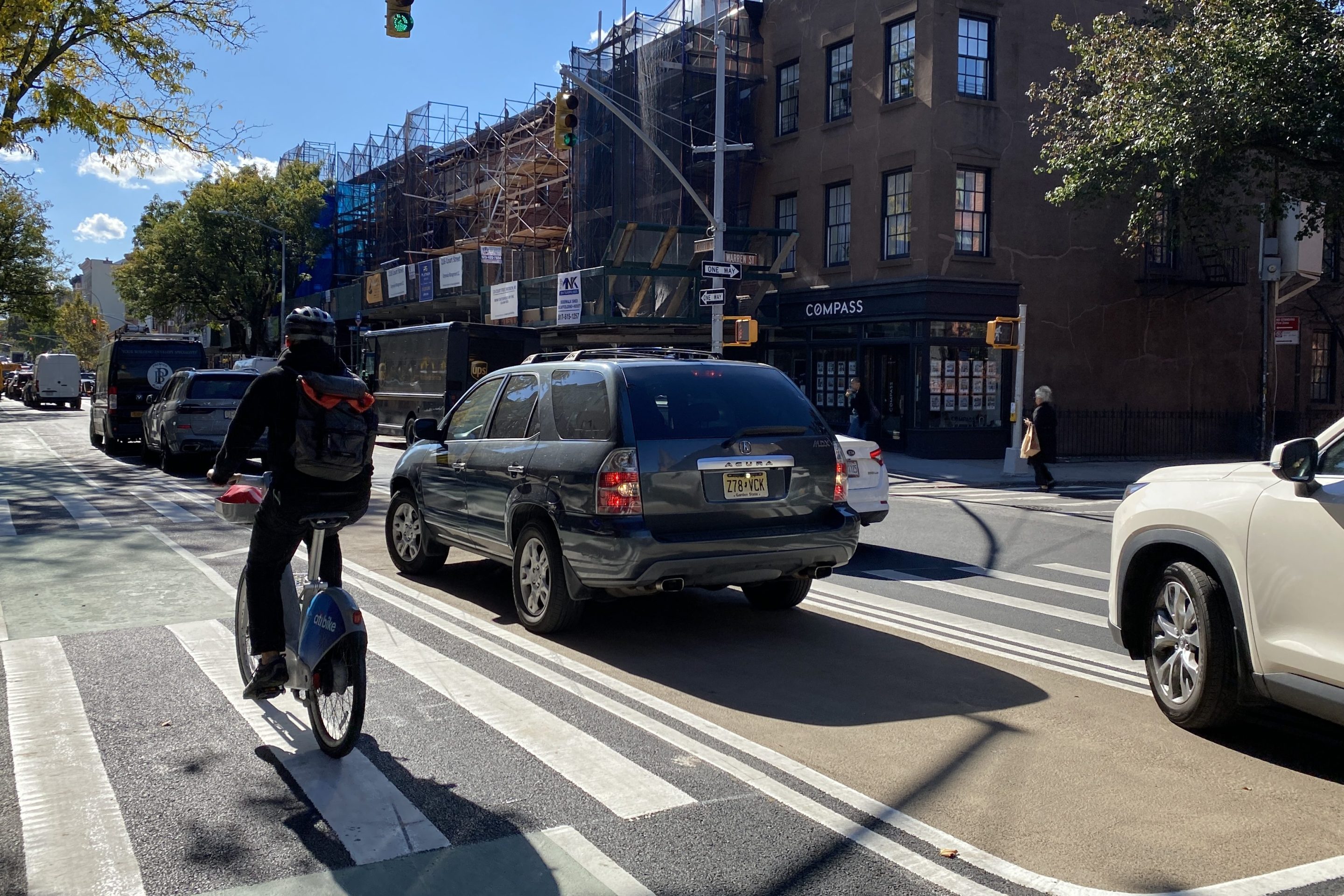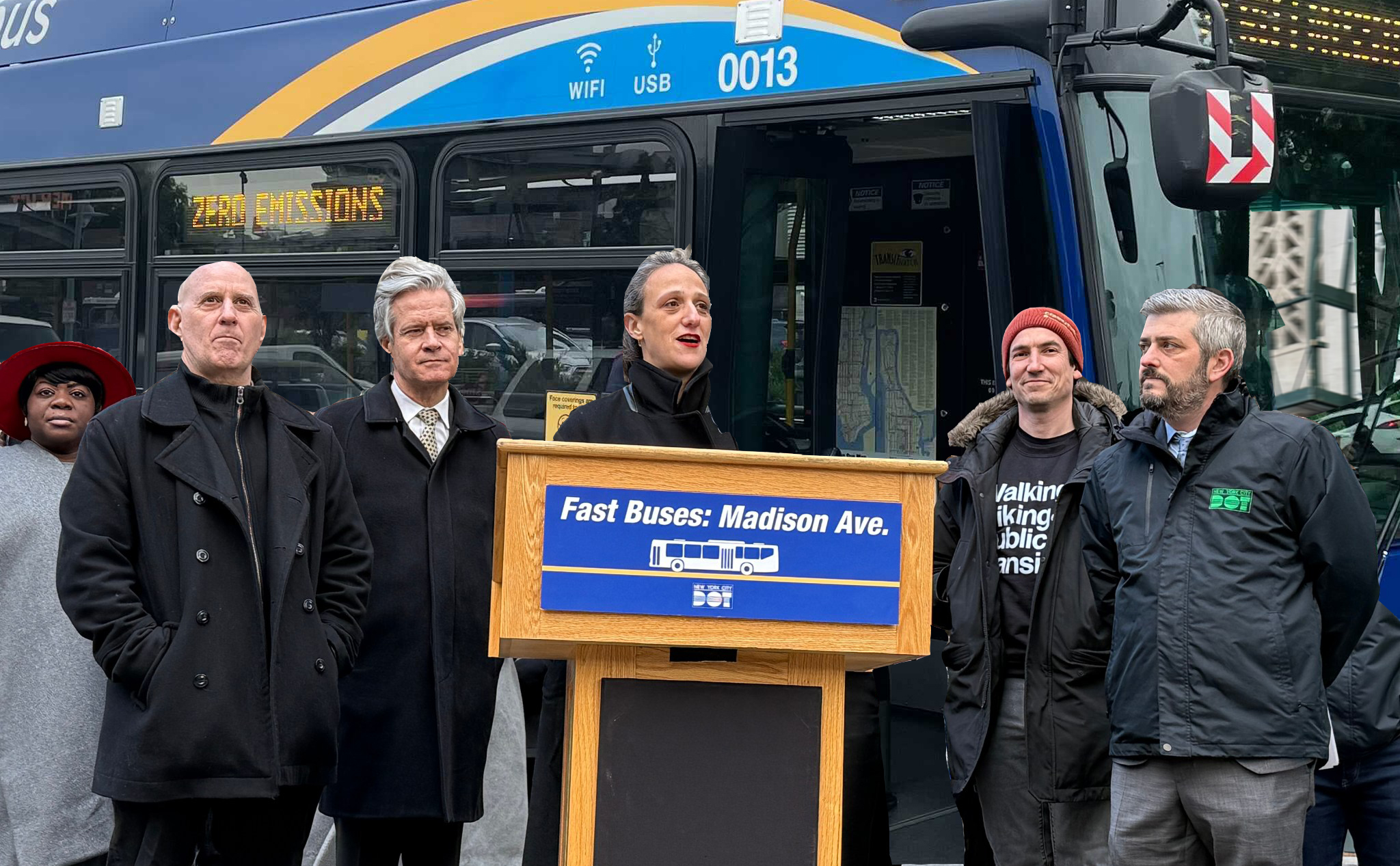Let's hope Hizzoner still feels this way when angry motorists throw a fit.
Mayor Adams said on Wednesday that repurposing 150,000 so-called parking spaces for containerized garbage collection will be a “small price to pay” in exchange for cleaner streets that will result under the Sanitation Department's potentially historic plan to move the notorious piles of black rubbish bags into closed bins.
Sanitation on Wednesday unveiled the first step: requiring smaller buildings to use wheeled bins beginning next fall — though those containers will remain on the sidewalk, in the way of pedestrians.
Gotham’s bigger buildings would need too many individual bins on the sidewalk, so when those buildings are ready to join the containerized future, those streets will get larger curbside shared containers — a practice that has worked well in other cities. Those containers would require repurposing the 150,000 largely free parking spots, about 5 percent of the 3,000,000 spaces citywide.
Despite a minority of city residents having access to a car, even cutting a few parking spots for outdoor dining, loading zones, or Citi Bike docks can cause uproar and trigger extensive criticism even by a paper of record with "New York" in its name. The mayor admitted that he would have some convincing to do, but said street cleanliness was the top issue he hears about after public safety.

“Everyday New Yorkers are tired of the rodents, they’re tired of the trash, and this is a small price to pay on ensuring that you can have cleaner streets,” Adams told Streetsblog at the press conference outside City Hall. “We know it’s going to be a conversation with the local community boards, civic groups, block associations, but this is a transformation that is ready in this city of how do we clean our streets.”
RELATED: HOW WILL THE RULES WORK? CLICK HERE
Adams cited the promising recent pilot of curbside containers on 10 residential blocks and outside 14 schools in West Harlem as an example of how the Big Apple could finally bring its waste practices up to modern standards.
New York's Strongest installed an average of 14 bins per block there in what used to be about four parking spots on each street, according to agency officials.
“Upper Manhattan, [which] has dealt with rodent problems for years, those garbage bins we have by the schools and on the streets area, it’s just a real win, you see a noticeable difference when you carry this out,” Adams said.
The uptown program has met some resistance from residents, but the area’s Council member has been a very vocal supporter of the program.
“What’s happening in West Harlem — it’s working,” Shaun Abreu said.
DSNY’s monumental containerization study released last spring found about half of streets with a residential property would work with wheeled bins, while another 39 percent would work with shared street containers and increased collection frequency.
Eleven percent of streets — such as those in the Financial District — are so densely populated that the street bins would have to take up more than a quarter of the curb space, even with double the collections. The agency found such streets unfeasible for containerization. Apartments in those areas, however, produce nearly a quarter of the city’s residential waste, according to DSNY’s report.
The city should also at the same time tie the containerized collection to efforts to reduce waste headed to landfill, such as tax incentives for property owners opting for smaller bins, said one expert.
“We can’t just solve for one thing, trash, we have to think how we could use the same space to solve for multiple things,” said Clare Miflin, founder of the Center for Zero Waste Design.
A proposal published by Miflin’s center in March showed how different types of containerization could work on the Vanderbilt Open Street, which has a mix of various building sizes both commercial and residential.
Less trash also means more curb space the city can reimagine for other uses that are better than personal vehicle storage, such as outdoor dining or delivery loading zones
“There is a huge amount of use for the curb lane and we have to integrate them all together,” she said.






